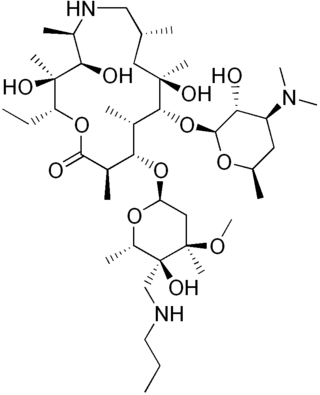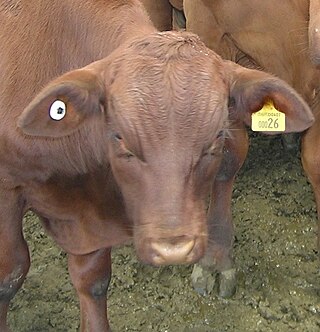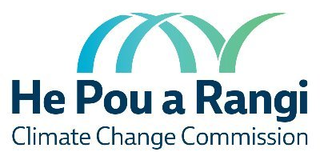Related Research Articles

Mycobacterium bovis is a slow-growing aerobic bacterium and the causative agent of tuberculosis in cattle. It is related to Mycobacterium tuberculosis, the bacterium which causes tuberculosis in humans. M. bovis can jump the species barrier and cause tuberculosis-like infection in humans and other mammals.
NAIT may refer to:

Eric Wilbur Roy is a New Zealand politician. He was a Member of Parliament (MP) for the National Party. He was first elected in 1993 and served, with one three-year break, until 2014.
AsureQuality Limited is a State-Owned Enterprise (SOE) fully owned by the government of New Zealand. The company's core business is food quality assurance with its services including certification, inspection, testing, and training. AsureQuality has over 1700 staff at over 100 locations throughout New Zealand. AsureQuality also has a joint venture partner, Bureau Veritas.. Bureau Veritas and AsureQuality have two joint ventures, BVAQ Australia and BVAQ SouthEast Asia.

Federated Farmers of New Zealand is a lobby and advocacy group for all farmers: arable including fruit and vegetables, dairy and meat and their often remote communities. It has a network of 24 regional organisations and six industry groups. Federated Farmers lobbies on farming issues both nationally and within each region. Membership of the organisation is voluntary, and at 2021 it has over 13,000 members.

An ear tag is a plastic or metal object used for identification of domestic livestock and other animals. If the ear tag uses Radio Frequency Identification Device (RFID) technology it is referred to as an electronic ear tag. Electronic ear tags conform to international standards ISO 11784 and ISO 11785 working at 134.2 kHz, as well as ISO/IEC 18000-6C operating in the UHF spectrum. There are other non-standard systems such as Destron working at 125 kHz. Although there are many shapes of ear tags, the main types in current use are as follows:
The National Animal Identification System, (naisG) is a government-run program in the United States intended to extend government animal health surveillance by identifying and tracking specific animals. Administered at the federal level by the Animal and Plant Health Inspection Service, a branch of the United States Department of Agriculture, NAIS will also be overseen by state animal health boards. While the federal program is voluntary, money received by some states, tribes, and non-profit entities from the USDA through cooperative agreements has been used to make parts or all of the program mandatory.
Infectious bovine keratoconjunctivitis (IBK), also known as pinkeye, New Forest eye or blight, is a veterinary infection of cattle caused by Moraxella bovis, a Gram-negative, β-haemolytic, aerobic, rod-shaped bacterium. It is spread by direct contact or by flies serving as vectors. It is the most common ocular disease of cattle. IBK is similar to human pink eye and causes severe infection of the conjunctiva, edema, corneal opacity, and ulceration. This disease is highly contagious and occurs worldwide. Younger animals are more susceptible, but recovery with minimal damage is usual, if they are treated early.

Tulathromycin, sold under the brand name Draxxin among others, is a macrolide antibiotic used to treat bovine respiratory disease in cattle and swine respiratory disease in pigs.
The British Cattle Movement Service (BCMS) is the organisation responsible for maintaining a database of all bovine animals in Great Britain; Northern Ireland has a separate database maintained by the Department of Agriculture and Rural Development. It was established in the wake of the mad cow disease crisis in the UK, and is part of the Rural Payments Agency. Other member states of the European Union have similar cattle tracing systems.

In New Zealand, agriculture is the largest sector of the tradable economy. The country exported NZ$46.4 billion worth of agricultural products in the 12 months to June 2019, 79.6% of the country's total exported goods. The agriculture, forestry and fisheries sector directly contributed $12.653 billion of the national GDP in the 12 months to September 2020, and employed 143,000 people, 5.9% of New Zealand's workforce, as of the 2018 census.

The National Livestock Identification System (NLIS) is a livestock identification and tracking system used in Australia. It is administered by Integrity Systems Company, which is a wholly owned subsidiary of Meat and Livestock Australia.

Dairy farming in New Zealand began during the early days of colonisation by Europeans. The New Zealand dairy industry is based almost exclusively on cattle, with a population of 4.92 million milking cows in the 2019-20 season. The income from dairy farming is now a major part of the New Zealand economy, becoming an NZ$13.4 billion industry by 2017.
Precision livestock farming (PLF) is a set of electronic tools and methods for managing livestock. It involves automated monitoring of animals to improve their production/reproduction, health, welfare, and impact on the environment. PLF tracks large animals, such as cows, "per animal"; however, it tracks smaller animals, such as poultry, "per flock", wherein the whole flock in a house is treated as one animal. Tracking "per flock" is widely used in broilers.
The Animal Health Board (AHB) was the organisation legally responsible for managing and implementing the National Pest Management Plan (NPMP) for bovine tuberculosis in New Zealand until it was disbanded on 1 July 2013. It was restructured to form TBfree New Zealand, the title of the programme for which it was responsible for managing before the formation of OSPRI.
Biosecurity in New Zealand guards against threats to agriculture and biodiversity, with strict border control measures being taken to prevent unwanted organisms from entering the country. New Zealand is an island nation that is geographically isolated from any other significant landmass. The species that are present evolved in the absence of organisms from elsewhere and display a high degree of endemism. Notable is the lack of land-based mammals, except for two species of bat. Indigenous species are at risk from population decline or extinction if any invasive species are introduced.
Mycoplasma bovis is one of 126 species of genus Mycoplasma. It is the smallest living cell and anaerobic organism in nature. It does not contain any cell wall and is therefore resistant to penicillin and other beta lactam antibiotics.

Mark Bryan is a veterinarian, landlord and researcher working in New Zealand. He is a director of VetSouth, one of two clinical research clinics in the South Island and Adjunct Senior Lecturer in Dairy Cattle Medicine at Massey University. In 2013 he was a finalist in the Ernst & Young Entrepreneur of the Year. He is a board member of the New Zealand Veterinary Association.
Tatuanui is a settlement and rural community in the Matamata-Piako District and Waikato region of New Zealand's North Island.

The Climate Change Commission is an independent Crown entity that advises the New Zealand Government on climate change policy and monitors the government's progress towards New Zealand's emission reduction goals within the framework of the Climate Change Response Amendment Act. The Commission was established as the successor to the Interim Climate Change Committee following the passage of the Zero Carbon Act in November 2019.
References
- ↑ Pizzuti, T.; Mirabelli, G. (2016). "Future technology in tracing animals on the food chain". In Espiñeira, Montserrat; Santaclara, Francisco J. (eds.). Advances in Food Traceability Techniques and Technologies: Improving Quality Throughout the Food Chain. Woodhead Publishing. p. 183. ISBN 9780081003213.
- ↑ "QA on Mycoplasma bovis, untangling truth from fiction of cattle disease". Stuff (Fairfax). 28 May 2018.
- ↑ "Primary industries head criticises farmers for not tagging animals". Stuff (Fairfax). 20 October 2017.
- ↑ "NAIT responsibility: the buck stops with farmers". Stuff (Fairfax). 15 December 2017.
- ↑ "Farmers given ultimatum to comply with animal tagging system". Stuff (Fairfax). 20 December 2017.
- ↑ "Why NAIT failed in cattle disease outbreak and what's being done about it". Stuff (Fairfax). 16 May 2018.
- ↑ "Changes to animal tracing system ordered with tougher approach to enforcement". Stuff (Fairfax). 18 May 2018.
- ↑ "Law changes give MPI more power in wake of cattle disease". Stuff (Fairfax). 17 August 2018.
- ↑ Federated Farmers (2008-05-22). "Feds say no to NAIT". Federated Farmers. Archived from the original on 16 October 2008. Retrieved 2009-01-03.
- ↑ Steeman, Marta (2009-01-02). "Farmers fear fishhooks in tagging plan". The Press .
- ↑ Steeman, Marta (2009-01-02). "Farmers fear fishhooks in tagging plan". The Press.
- ↑ Scott, Annete (11 November 2019). "Farmers happy with NAIT changes". Farmers Weekly. Retrieved 19 August 2021.
- ↑ "Budget 2021: Federated Farmers welcome funding, Dairy NZ says it missed the mark". Radio New Zealand . 21 May 2021. Archived from the original on 16 June 2021. Retrieved 19 August 2021.